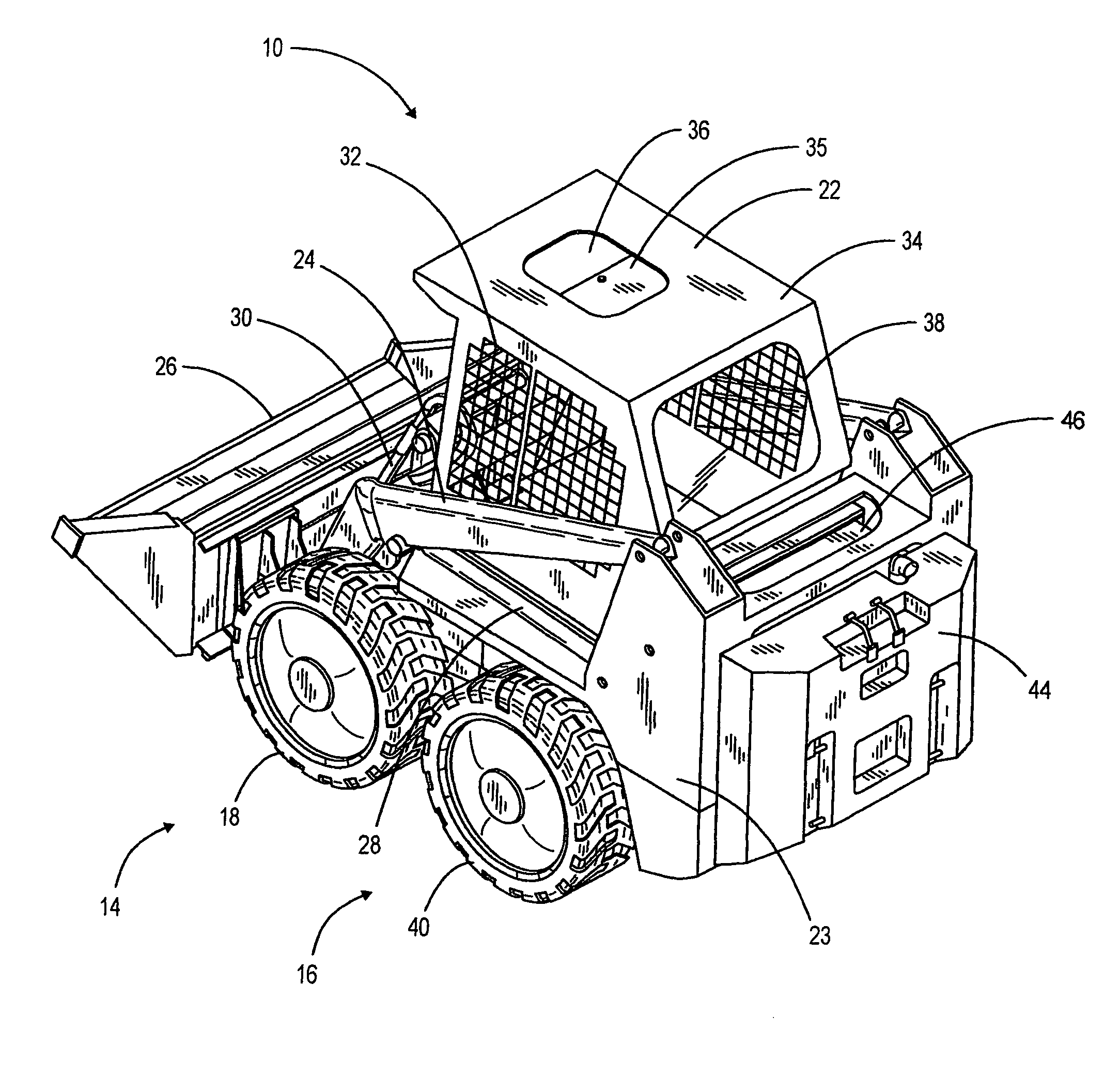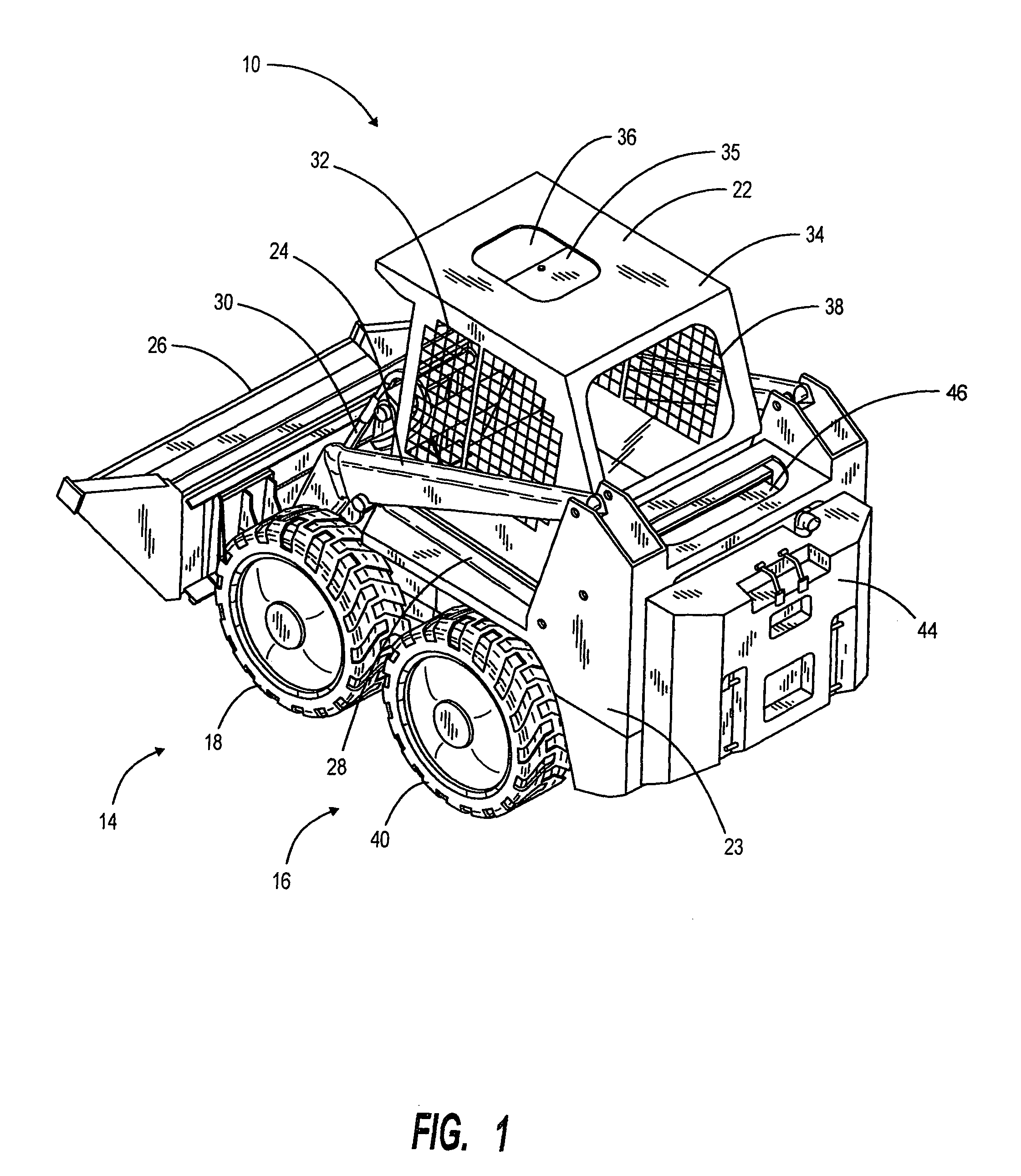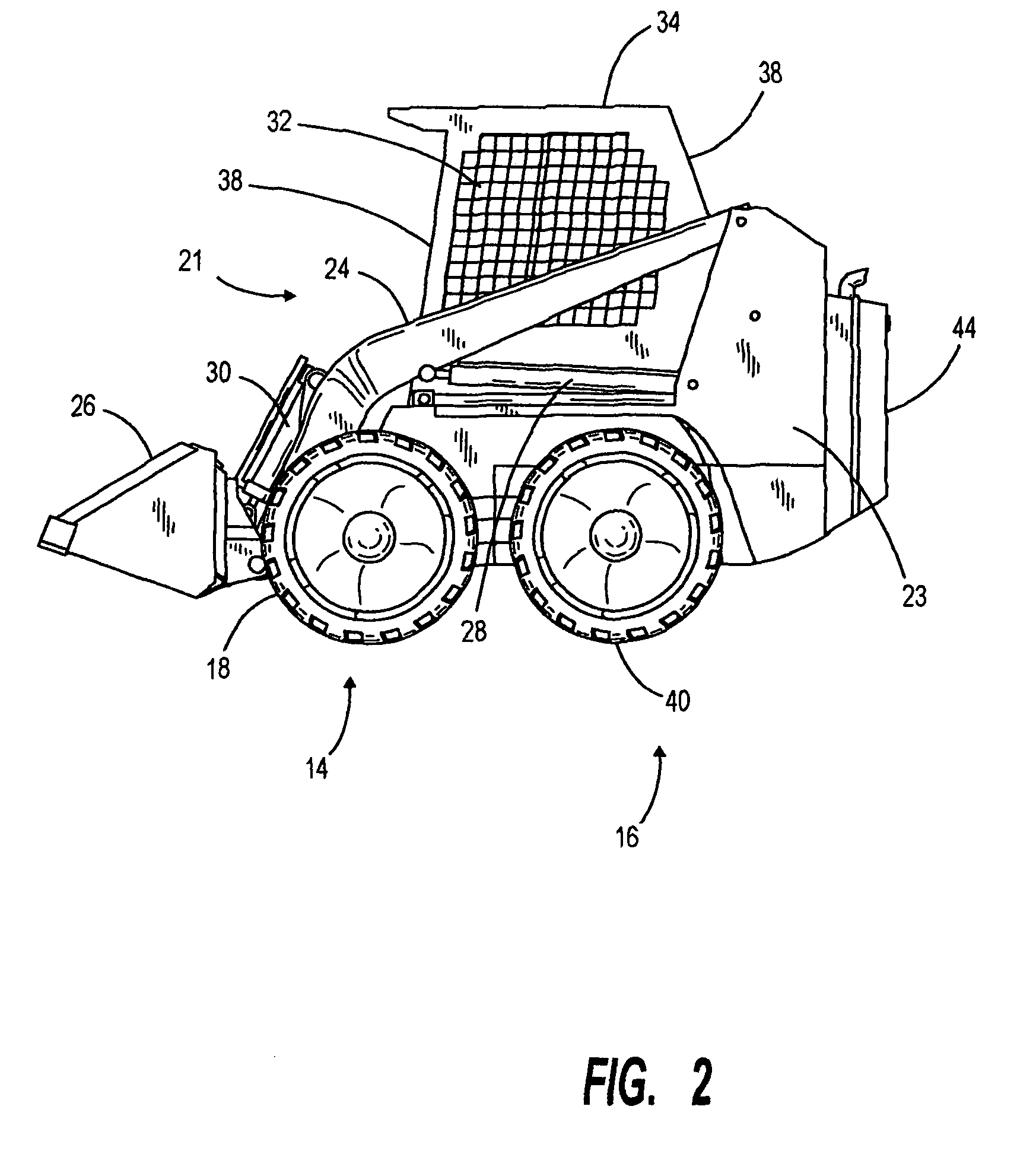Extendable frame work vehicle
a technology of extension frame and work vehicle, which is applied in the direction of tractors, instruments, navigation instruments, etc., can solve the problems of difficult and costly acquisition and transportation of such a variety of equipment, difficult and costly mastering of the many steering and control systems of these different vehicles, and difficult safety considerations, so as to improve safety and efficiency, enhance versatility, and safely allow greater lifting load capacities
- Summary
- Abstract
- Description
- Claims
- Application Information
AI Technical Summary
Benefits of technology
Problems solved by technology
Method used
Image
Examples
Embodiment Construction
[0081]The present invention can be readily understood from the aforementioned figures, the following detailed description and certain embodiments of the present invention. It will be appreciated that the detailed embodiments are meant only as examples and are not intended to limit the scope of the concepts in any manner.
[0082]FIG. 1 sets forth the basic assembly of the work vehicle in its retracted configuration. In general, the overall appearance of the vehicle may resemble a typical skid steer design when in a retracted state. Although many of the vehicle's features are concealed in this contracted disposition, some of the work vehicle's basic structure can be appreciated from the perspective view of FIG. 1 and the side view of FIG. 2.
[0083]The work vehicle 10 generally, as will become apparent, includes a frame having a front portion 14 and a rear portion 16. Front portion 14 of the frame supports a lift arm assembly 21 (FIG. 2), an operator's cab 22, side housing members 23, and...
PUM
 Login to View More
Login to View More Abstract
Description
Claims
Application Information
 Login to View More
Login to View More - R&D
- Intellectual Property
- Life Sciences
- Materials
- Tech Scout
- Unparalleled Data Quality
- Higher Quality Content
- 60% Fewer Hallucinations
Browse by: Latest US Patents, China's latest patents, Technical Efficacy Thesaurus, Application Domain, Technology Topic, Popular Technical Reports.
© 2025 PatSnap. All rights reserved.Legal|Privacy policy|Modern Slavery Act Transparency Statement|Sitemap|About US| Contact US: help@patsnap.com



